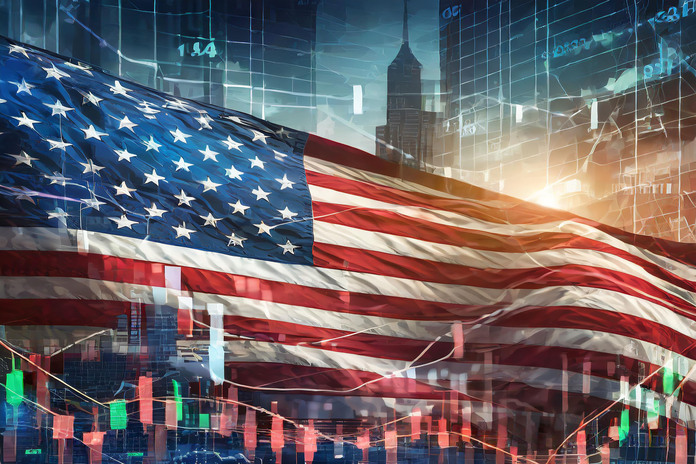The September Federal Reserve meeting came and went.
The Federal Open Market Committee (FOMC) reduced interest rates by 25 basis points, taking the key Fed Funds rate down to a range of 4.00-4.25%, as expected.
The FOMC’s quarterly Summary of Economic Projections included a forecast for an additional two 25 basis points-worth of rate cuts before the year-end, but only another 50 basis points by the end of 2027.
This was just what the doctor ordered. Easier monetary policy today, the promise of more tomorrow (so far, so dovish), but not enough to suggest that the US central bank would have to slash rates to counter an economic slowdown, let alone a full-throttle recession.
US stock indices dipped, then ripped
The Dollar Index briefly dropped to its lowest level since early February 2022, but then pushed higher. Gold and silver, sold off initially before turning up sharply.
While the Fed’s announcement may have been balm for the markets, it didn’t please everyone.
Fortunately, President Trump was too busy enjoying his State Visit to the UK to unleash his full invective on the Fed.
As the President has made abundantly clear, he believes that the central bank, and in particular its Chair Jerome Powell, has acted politically in failing to cut rates aggressively this year. But Mr Trump’s apparent reticence proved to be a brief hiatus.
Over the last weekend of September, Mr Trump posted a cartoon on social media showing him firing Jerome Powell.
Hostilities have resumed, and no doubt the Trump administration will continue to harass the central bank Chair, while doing its best to replace existing Fed governors with the administration’s preferred candidates.
Jerome Powell may be standing down in May, but that won’t be soon enough for Mr Trump.
Yet there’s something else simmering away which has the potential to derail the ongoing rally across US stock indices. Recently, investors have started to worry about the amount of money being spent to develop Artificial Intelligence (AI), or more specifically, generative AI.
Chip designer Nvidia, the world’s most valuable company in history, has been leading the advance. Nvidia designs the semiconductors integral to the development of generative AI.
Its role is often described as like selling the picks and shovels in the middle of a gold rush, only Nvidia holds a monopoly on the tools. A few weeks ago, Nvidia announced that it was investing $100 billion in OpenAI, the owner of ChatGPT.
On the face of it, this looks like yet another massive vote of confidence in AI’s growth potential. But some analysts have questioned the circularity of this investment, and others.
After all, from another angle, it looks as if Nvidia is lending its customers the funds to buy its own, very expensive, chips. And let’s not forget how much money has poured into AI with very little, if any, return to date.
Investors have been buying up any company, no matter how tenuous its links to AI development. This has sent valuations across the tech growth sector up to nosebleed levels.
And it’s probable that, as with the ‘Dot.com’ bubble, some won’t make it.
At the same time, it’s also worth considering just how deep a moat corporations like NVIDIA have around them.
The US-China trade war has only boosted China’s determination to create its own answer to NVIDIA, and there’s a very good chance that it could soon achieve this, or something good enough.
That means Nvidia could soon be looking like the Emperor in his new clothes. If so, that’s a very big bubble, and Chinese tech could be the pin.
(David Morrison is a Senior Market Analyst at Trade Nation. Views are his own.)
The post The Emperor’s new clothes appeared first on Invezz

